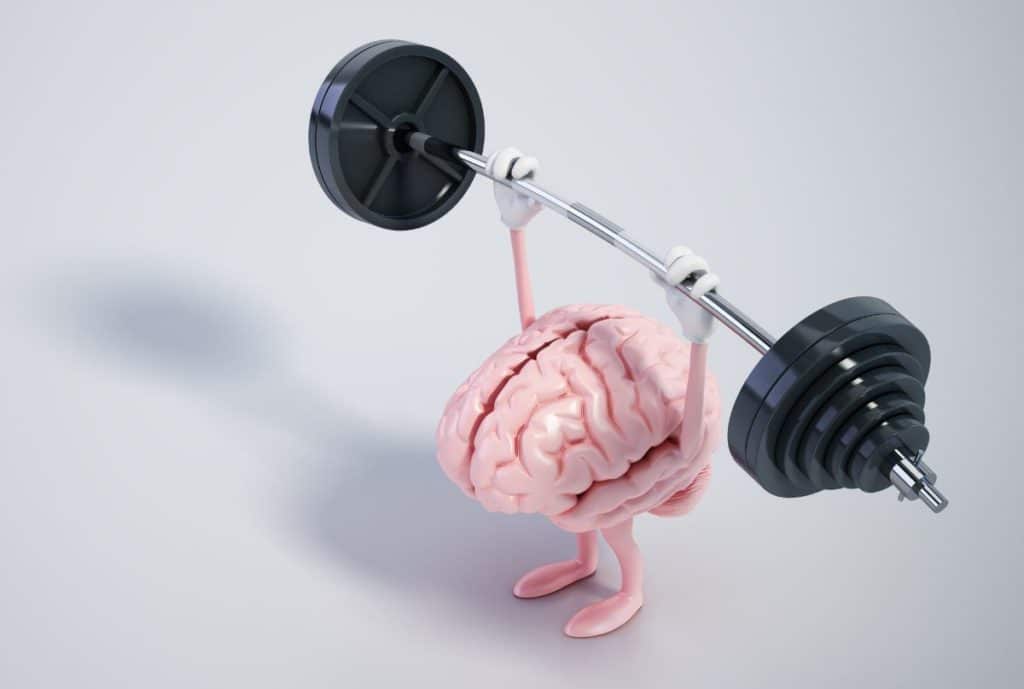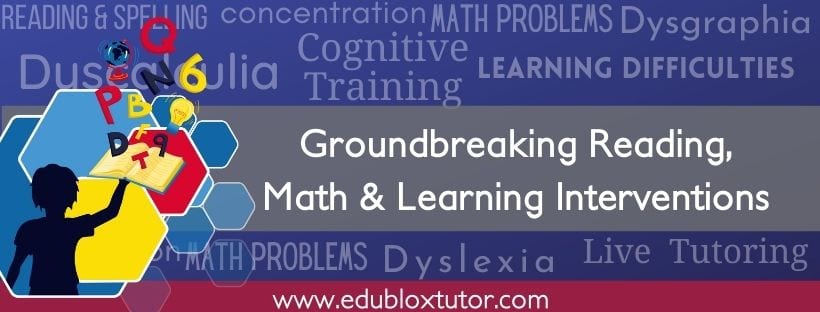
Memory refers to the psychological processes of acquiring, storing, retaining, and later retrieving information.
Psychologists distinguish between three necessary stages in the memory process: encoding, storage, and retrieval. Encoding refers to the initial learning of information; storage to maintaining information over time; retrieval is the ability to access information when needed.
Scientists also distinguish between different forms or types. This article discusses 17 different memory types and provides a comprehensive program that targets encoding, storage, and retrieval and improves eight crucial types: iconic, short-term, working, long-term, visual, auditory, sequential, and visuospatial.
Table of contents:
- Memory takes many different forms
- Sensory memory
- Short-term memory
- Working memory
- Our senses are involved
- Sequential or visuospatial
- How to improve memory
- Program to improve memory
Memory takes many different forms
The human brain was once considered a single organ with specific areas allotted for different tasks. Now, with recent research studies, it has been concluded that the human brain is, in fact, one of the most complex organs of the body.
The brain is a giant neural supercomputer with neurons firing information and tasks away from one corner to the other. Memory, once considered a stack of folders kept in a single place, is now attributed to function in many different brain parts.
Scientists now also know that memory takes many different forms. There is a difference between short-term memory, where you store a new phone number long enough to dial it a moment later, and long-term memory, where you store your own phone number to produce it whenever asked (Miller, 1956).
The main categories of memory are sensory, short-term (or working), and long-term, based on the amount of time the memory is stored.
Sensory memory
Sensory memory is the shortest-term element of memory. It is the ability to retain impressions of sensory information after the original stimuli have ended. It acts as a buffer for stimuli received through the five senses of sight, hearing, smell, taste, and touch, which are retained accurately but very briefly. For instance, the ability to look at or hear something and remember what it looked or sounded like with just a second of observation is an example of sensory memory.
The sensory memory for visual stimuli is known as iconic memory, the memory for aural stimuli as echoic, taste as gustatory, smell as olfactory, and touch as haptic. Echoic memory lasts 2 to 4 seconds, while iconic memory lasts just milliseconds before fading.
Short-term memory
Short-term memory is the part of the memory system that holds information a person is thinking about at the moment. Short-term memory is limited to about seven items and will be lost in about fifteen seconds unless the information is rehearsed.
If you have looked up a telephone number in a directory, you already know much about short-term memory. You repeat the number to yourself until you dial, and the number is forgotten by then. That’s short-term memory at work.
Working memory
The distinction between short-term memory and working memory is an ongoing debate, as the terms are often used interchangeably.
Some scholars claim that some manipulation of remembered information is needed to qualify the task as one of working memory. Repeating digits in the same order they were presented would thus be a short-term memory task while repeating them backward would be a working memory task.
Another viewpoint is that of Nelson Cowan, who says short-term memory refers to the passive storage of information when rehearsal is prevented with a storage capacity of around four items. When rehearsal is allowed and controlled attention is involved, it is a working memory task, and the capacity is closer to seven items.
Long-term memory
Long-term memory is the memory process that takes information from the short-term memory store and creates long-lasting memories. These memories can be from an hour ago or several decades ago. While short-term memory is limited in space and duration, long-term memory has an immense capacity, and memories can last for a lifetime.
Within long-term memory, there is a difference between semantic memory, where you store your knowledge that The Rolling Stones are a rock band, and episodic memory, where you may store your memory of hearing Exile on Main Street for the first time (Tulving, 1983). Procedural memories are memories for performing particular types of actions. While semantic memory is knowing “that,” procedural knowledge is knowing “how.”
Our senses are involved
When it comes to memory, our senses are involved too. Visual memory involves storing and retrieving previously experienced visual sensations and perceptions when the stimuli that initially evoked them are no longer present. In short, visual memory is the ability to recall what the eyes have seen.
Various researchers have stated that as much as 80 percent of all learning occurs through the eye, with visual memory being a crucial aspect of learning.
Auditory memory on the other hand, involves taking in information that is presented orally, processing that information, storing it in one’s mind, and then recalling what one has heard. Basically, it involves the skills of attending, listening, processing, storing, and recalling.
Sequential or visuospatial
Sequential memory requires items to be recalled in a specific order. In saying the days of the week, months of the year, a telephone number, the alphabet, and counting, the order of the elements is paramount. Visual sequential memory is the ability to remember things seen in sequence, while auditory sequential memory is the ability to remember things heard in sequence.
Visuospatial memory involves recalling shapes and colors and their locations and movements. Children with dyscalculia typically show poor visuospatial memory performance. For example, they struggle to remember items’ locations in a spatial grid.
How to improve memory
Memory is increasingly recognized as a crucial cognitive skill, and the good news is that it can be improved with training. By improving this critical skill, one can realize gains in key areas, from school to work to retirement.
When doing cognitive skills training, it is essential to note that such training should be multi-cognitive. In physical training, a balanced workout is vital as overtraining one part of the body can cause deformity, such as Popeye syndrome when overtraining the biceps.
The brain is no different. For example, in Maguire et al.’s experiment with London taxi drivers, growth in the posterior hippocampi seems to have come at a cost, as they had reduced anterior hippocampal gray matter volume compared with bus drivers, with anterior volume decreasing with more navigation experience (Maguire et al., 2006).
One should also consider the role of mutualism. A mutualistic view suggests that cognitive abilities mutually facilitate growth. For example, better reasoning skills allow individuals to improve their vocabulary more quickly, and better vocabulary is associated with faster improvement in reasoning ability (Kievit et al., 2017).
Program to improve memory
The program below aims to improve the memory of students aged 7 to 70. Below are some guidelines to help you get the maximum benefits from this program.
1. Study the program. The program consists of exercises to improve all the important memory types.
2. Start learning the exercises. Once you have studied the program, you should read how to execute the exercises. Do not try to learn all the exercises at once.
Let the learner start with Development Tutor. Study the other two exercises in the program once the learner is comfortable with Development Tutor.
3. Find a quiet time and a quiet place. You will want to find a time that is relatively free from distractions, especially in the beginning, so that the learner can concentrate.
4. Find a suitable time. Early morning is a good time since it helps the learner organize their mind for other intellectual challenges they may face during the day. If the learner goes to school and you can only do the program with them after school, they will need a break before beginning the program.
Depending on your situation, you may break the lesson plan into two short sessions instead of one long session. You could, for example, let the learner do Development Tutor in the morning and the other exercises in the afternoon.
5. Determine how many sessions there should be. You will need to determine how many sessions you will do during the week. The program below is approximately 25-35 minutes in length. Ultimately, one would do five lessons per week, especially if the learner has severe memory problems. Four weekly sessions will probably be sufficient if the learner’s problem is not too severe. The basic principle is that the more time you can put into the program, the faster the progress you can expect.
Edublox memory program
Arrows with a Twist for 3-5 minutes
This exercise consists of six levels and develops various skills such as divided attention, directionality, sequencing, rapid naming (retrieval from long-term memory), and working memory.
Development Tutor for 15-25 minutes (3 exercises)
Development Tutor aims to improve various cognitive skills, including focused and sustained attention; visual and auditory processing; processing speed; iconic, short-term, working, and long-term memory; visual and auditory memory; sequential and visuospatial memory; and reasoning.
Each lesson consists of 3 exercises and takes approximately 20 minutes to complete. Requirements for Development Tutor are Windows (7 or newer) and Mac Computers, using Google Chrome. It is also compatible with Android tablets, minimum screen size: 10″; minimum screen resolution: FHD (1920×1080) or FHD+ (1920×1200).
Parents don’t have to sit with their children while they are doing Development Tutor, but they need to keep an eye to ensure that they are doing the exercises without making notes or using aids to get the answers right. However, when doing the logical thinking exercise, they may use any aids.
In the case of younger learners and those with very slow processing speed, extending the timer is recommended. You can set it back to normal in 2-3 months.
Working Memory Exercise for 4-5 minutes
This exercise consists of two steps. The primary purpose of Step 1 is to improve long-term memory, while Step 2’s objective is to improve working memory.
One must ensure that a student’s memory deficits have been entirely overcome before discontinuing the program.
Edublox offers cognitive training and live online tutoring to students with dyslexia, dysgraphia, dyscalculia, and other learning disabilities. Our students are in the United States, Canada, Australia, and elsewhere. Book a free consultation to discuss your child’s learning needs.
References:
Cowan, N. (2001). The magical number 4 in short-term memory: A reconsideration of mental storage capacity. Behavioral and Brain Sciences, 24(1): 87–114.
Kievit, R. A., Lindenberger, U., Goodyer, I. M., Jones, P. B, Fonagy, P., Bullmore, E. T., & Dolan, R. J. (2017). Mutualistic coupling between vocabulary and reasoning supports cognitive development during late adolescence and early adulthood. Psychological Science, 28(10): 1419-31.
Maguire, E. A., Woollett, K., & Spiers, H. J. (2006). London taxi drivers and bus drivers: A structural MRI and neuropsychological analysis London taxi drivers and bus drivers. Hippocampus, 16(12): 1091-101.
Miller, G. A. (1956). The magical number seven, plus or minus two: Some limits on our capacity for processing information. Psychological Review, 63(2): 81–97.
Tulving, E. (1985). Elements of episodic memory. OUP Oxford.

